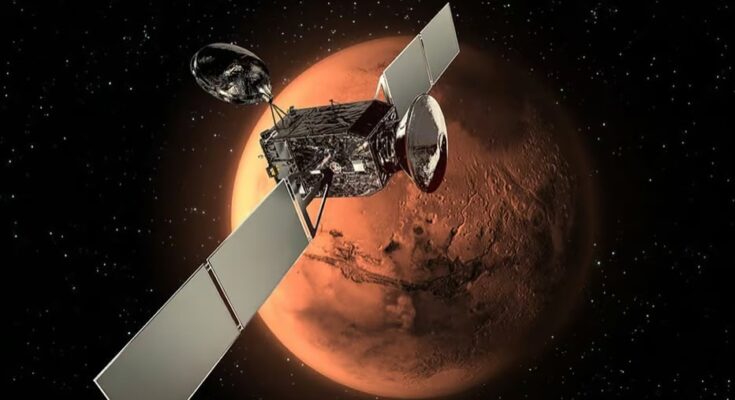UK-based aerospace company Pulsar Fusion is working to build a rocket powered by nuclear fusion that could reach speeds of 500,000 mph which could cut the time to fly to Mars by half.
Astronauts could reach the red planet in weeks instead of months.
The Insider reports that recent research has concluded that a trip to Mars would be safe-ish if they make it back home in under four years and don’t spend too much time exposed to radiation and the lack of gravity.
With current technology, NASA estimates it would take seven months to reach Mars, so about 30 oercent of the total “safe” trip time would be wasted in transit. Cut the travel time in half, and people would have a lot more time to run tests and hang out on Mars’ surface.
“Humanity has a huge need for faster propulsion in our growing space economy, and fusion offers 1,000 times the power of the conventional ion thrusters currently used in orbit,” Richard Dinan, the CEO of Pulsar Fusion, said in a statement.
“If humans can achieve fusion for energy, then fusion propulsion in space is inevitable.”
This tech is so exciting they are already talking about using it to send people to see other tourist hotspots in space, like Jupiter’s moons.
“[A] fusion rocket could allow us to send people to Mars and bring them back in weeks, not months or years,” said Pulsar propulsion engineer Adam Baker.
“It could allow us to do round trips to the outer planets of the solar system, to send people to see the rings of Saturn or the moons of Jupiter.”
Nuclear fusion rockets can send humans beyond Mars
Pulsar Fusion claims that a nuclear fusion rocket is the only known technology that could propel a craft fast enough to visit destinations outside of our solar system in a human lifetime.
It adds that the rocket could reach our nearest neighboring solar system (Alpha Centauri) in 10.5 years. It would take fission or chemical rockets hundreds of years.
It says that the conditions in space are ideal for nuclear fusion. Its minus 275 degrees which is ideal for superconducting magnets and that space is a vacuum so there is no need for enormous high vacuum components.
The rocket may also be used as a power source on other planets, for robotics or asteroid mining.
Pulsar Fusion is looking to have a test firing of a rocket toward the end of this decade.
Elon Musk has expressed interest in the potential for nuclear-power rockets. In response to a story about using nuclear rockets to reach Mars in 100 days, he said it was something NASA should be exploring, calling it a “great idea.”
Nuclear thermal rocket for fast transit around solar system would be a great area of research for @NASA
— Elon Musk (@elonmusk) July 22, 2019
In 2022 Musk said it was “highly likely” that people will visit Mars within 10 years, and he hopes to colonize the planet by 2050.
The SpaceX and Tesla CEO Musk has long advocated for the colonization of Mars as a solution to many of the Earth’s problems, particularly climate change, and has made landing on the planet one of his biggest goals.



